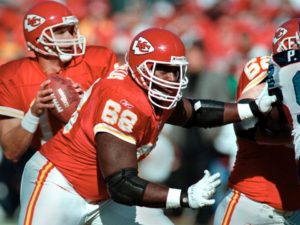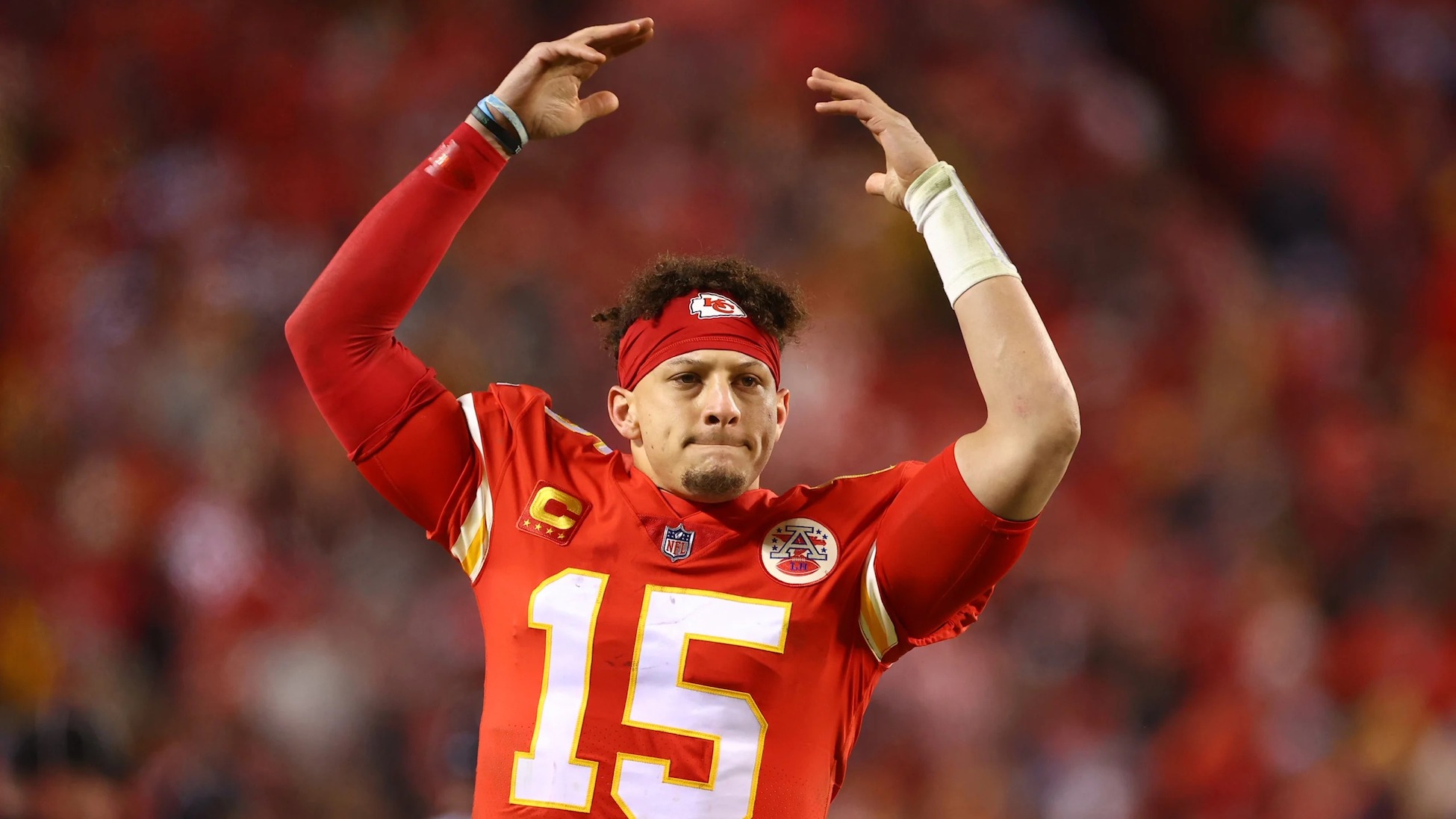KANSAS CITY, Mo. — Another member of the Chiefs will enter the Pro Football Hall of Fame on Saturday night at Fawcett Stadium in Canton, Ohio.

G Will Shields (68) in pass protection. Photo used with permission from Chiefs PR. Credit: KCChiefs.com
Will Shields will be one of eight members joining the Hall during induction ceremonies for the class of 2015. Shields will be the ninth player to enter the hallowed halls who spent the majority of his career with the Chiefs and the 11th modern-era player who did his career work at guard (the modern era is defined by the Hall as coming after 1946).
Nearly 22 years before, on a sultry Sunday afternoon in September 1993, the Chiefs opened their regular-season schedule against the Buccaneers at Tampa Stadium. The opener featured Joe Montana and Marcus Allen making their debuts for the Chiefs. Montana was near the end of his Hall of Fame career, having moved to the Midwest through a trade with San Francisco. Allen was resurrecting his career after spending four years in Al Davis’ doghouse with the Oakland Raiders. His signing as a free agent with the Chiefs gave him a five-season tour that cemented his Hall of Fame credentials.
Shields was just beginning his NFL career. A third-round draft choice out of the University of Nebraska, Shields finished the preseason as the club’s No. 3 guard, behind veteran starter Dave Szott (left) and journeyman Danny Villa (right). When the Kansas City offense took the field with Montana and Allen leading the way, Shields was on the sideline, helmet in hand.
It would be a first and only for Shields: His first NFL game was the only one where he did not start for the Chiefs. By the time he retired after the 2006 season, Shields played in 232 games in the regular season and playoffs with 231 consecutive starting assignments.
He entered the action in the first half against the Buccaneers, replacing an injured Szott at left guard. As he ran onto the field, his position coach, Alex Gibbs, told him, “Don’t get Montana killed out there.”
By the next week, Shields opened the game at right guard and did not leave for 14 seasons. He was gifted with three major attributes that showed through 12 seasons in the Pro Bowl: unusual athletic ability for a man who was 6-foot-3 and more than 300 pounds; intelligence that made him one of the league’s smarter players; and availability. He was always there for four different head coaches from 1993 through 2006, never missing a game.
“I don’t know that we had a player who was tougher, smarter and more available than Will,” said Marty Schottenheimer, the Chiefs’ head coach for the first six of Shields’ seasons. “It was obvious from his first camp; the transition to the NFL was not something he couldn’t handle.
“Most impressive was his ability to assimilate all the information that was part of our offense that first season. We changed everything that year, brought in Joe (Montana) and Paul Hackett to coordinate the Bill Walsh offense. He was always prepared mentally and he did not lose many one-on-one battles physically. For his size, he was very mobile and he could block between the tackles, and pull and run the sweep.”
Dick Vermeil was head coach of the Chiefs for five seasons near the end of Shields’ career.
“He’s someone that was a very good player, but he’s an even better young man,” Vermeil said. “I had the chance to coach a lot of players in the NFL and he ranks among the best I saw. I’m not sure there was anybody else that put his talent together with a level of character that was unmatched. “
There were three considerations for the Chiefs as they prepared to make their first choice in the ’93 NFL Draft. They had given up their first-round pick to the 49ers in the trade for Montana and their second-round pick was used in the 1992 NFL Supplemental Draft to select University of Florida defensive end Darren Mickell.
Shields was one of those in the mix as the draft headed for pick No. 74, but one member of the Chiefs’ decision-making group did not want to draft him: Gibbs. The following are excerpts from Gibbs’ report on Shields after seeing him at the NFL Combine and watching him on film playing against Oklahoma, Colorado, Iowa State and in the Hula Bowl and East-West Shrine Game:
“Strong points: tough, competitive and pulls well. Weak points: offense he plays in … needs more bend . . . behind in pass protection.
“Summation: Nebraska players scare me more than any others. Is he smart enough? How long will it take? He’s not an adjustment player. Poor pass pro on film. Tall in run blocking. Good overall athletic ability. How far is a guess?
“Projection: Will make all teams and start in second year at some point. I think he’s overrated by coaches I talk to. I think he’s a reach.”
Shields had two big supporters in the evaluation process: general manager Carl Peterson and vice-president of player personnel Lynn Stiles.
“I called and talked to (Nebraska head coach) Tom Osborne and he couldn’t stop telling me how we would love Will, his personality, his work ethic and his skill,” Peterson said. “He was effusive in his praise.”
Stiles summed up his thoughts in his scouting report: “This young man has size and A.A. (athletic ability) to become a top player at his position provided he continues to work. Needs time in the weight room, has excellent balance, ability to pull, light on his feet, has good P.P. (pass protection) skills, can drive block, roll hips, good leg drive, has feet, plays smart, aware, can use his hands, can uncoil, can adjust and hit on the run . . . . the ability to contribute early. An early 2nd-round pick.”
When the time came, the selection was Shields and that decision would become the finest draft choice in post-merger Chiefs history. He proved to be a blocker equally adept in the running game and in pass protection. Shields blocked for Allen, Priest Holmes and Larry Johnson during his career; he blocked for 1,000-yard rushers for five seasons. He blocked for 4,000-yard passers for four seasons.
Early in his rookie season, Gibbs pulled Shields aside and told him about his negative pre-draft assessment.
“He admitted to me that he didn’t want them to draft me,” Shields said. “He also admitted that he was wrong. I remember he said to me, ‘I might get to ride your coattails into retirement.’ ”
Or, all the way to the Hall of Fame.
———-
Bob Gretz is the senior editor for ChiefsDigest.com. Use the contact page to reach him or find him on Twitter: @BobGretzcom.
———-

